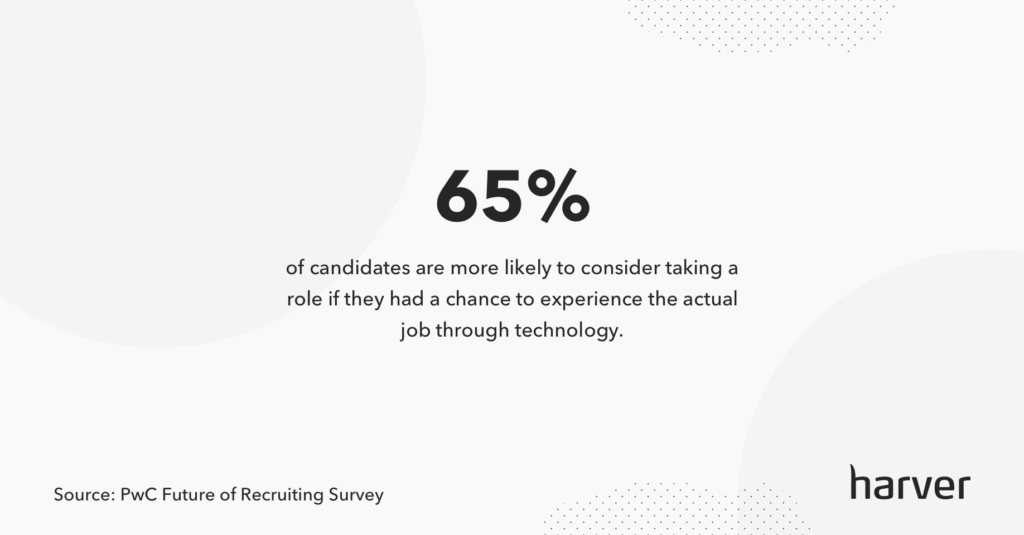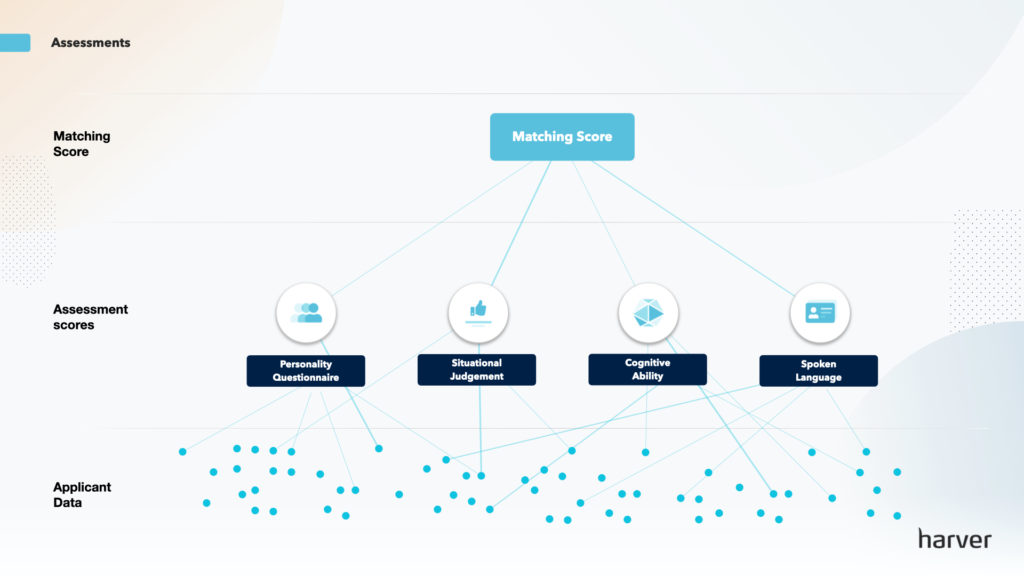Earlier this year we’ve asked contact center and BPO recruiters what their biggest challenges are in 2021, and hiring efficiency was the number one pain point mentioned by most of our respondents.
This may sound surprising, as the industry continues to deal with high attrition rates, and the priorities in 2020 were improving self-service and employee engagement, as well as increasing the focus on coaching and developing the staff.
Improving the efficiency of the recruitment processes wasn’t an emergency last year, but things have changed due to Covid-19, as high-volume recruiters found themselves completely unprepared for the changes in labor market.
Let’s take a look at the trends shaping contact center hiring in 2021 before we dive into the two critical processes that BPO and call center leaders should focus on to thrive in this new reality.
What’s in?
Like what you see?
Don’t miss out. Subscribe to our quarterly digest to get the latest TA and TM resources delivered right to your inbox.
Four trends shaping contact center recruitment in 2021
The volatility of the labor market
Unemployment is spiking at the moment due to Covid-19 layoffs, and this means more applicants for each job. But it also means that people switch industries and apply to roles they’re not qualified for.

People who cannot find a job in hospitality, for example, now want to work in call centers, and this makes the selection harder, despite offering employers a larger number of candidates to choose from.
Moreover, the reopening of restaurants, shops, and hotels brings a second wave of people who want to get a job as soon as possible. Then, working from home is more attractive than ever. For candidates, this means that they’re no longer bound to a location, so they apply everywhere.
For recruiters, this means that they have to filter out even more applicants who don’t fit their criteria. Companies offering work from home jobs get 10x the volumes of last year.
The death of the “call center agent” as we knew it
In the past, contact centers were hiring “call center agents”; these were very specific roles with low requirements on the skills side. Anyone who could sit at a desk for a couple of hours per day and pick up the phone to answer customer questions was a good fit.
Today, things are very different. Most customer interactions start online, from buying a product and tracking the order to changing an address or rescheduling a flight. Everything happens online and the diversity of tasks that a chat agent needs to handle makes this role complex and less straightforward to hire for.
In BPOs and contact centers, clients also have a say in who should be handling their customers, and how that should happen. The call center agents are an extension of the brand, and as calls and customer inquiries are becoming more difficult, skills like empathy and customer orientation are more important than ever.
Hire better live chat agents, at scale.
Dive into the rise of live chat, the skills of top-performing agents, and how to best assess them to reduce attrition and guarantee top-notch customer service.

The need to scale up and down overnight
Before Covid-19, contact centers dealing with large volumes of applicants had to hire 6,000 people every quarter; now this is the number of candidates they need to hire and onboard quarterly.
And it’s not only for Covid-related projects but also for e-commerce clients, as the number of customer interactions there is going through the roof as well.
These numbers are expected to go down once the new reality settles in, so BPOs and call centers need to be prepared to scale their recruitment efforts down just as fast as they scale up.
It’s humans and tech, not humans vs. tech
Recruitment is about people and with all the advanced technologies available today, there are still steps in the hiring process that should be handled by humans.
Although over the past couple of years technology has been presented as something that will take over HR and recruitment roles, 2020 taught us that the only way to thrive in high-volume hiring is to adopt technology that empowers humans instead of fully replacing them.
Candidates still want to hear from recruiters, but they prefer to experience the actual job through tech before joining an organization.

Moreover, 60% of candidates expect the hiring process to take less than a month from the time of submitting the application.
Unrealistic?
If you stick to manual processes, yes. The typical hiring process as pictured below takes more than four weeks – way too long in a volatile labor market like the one we’re seeing post-Covid-19.

So your only option as a high-volume contact center recruiter is to embrace technology and use it to empower your HR and recruitment team.
How exactly can you do this, and what should you start with?
We believe that the areas that can make the biggest impact on the efficiency of your recruitment process, and that should be digitized first, are the candidate selection and interview scheduling steps.
Two critical elements affecting the efficiency of the hiring process
High-volume recruiting deals with low complexity jobs, so in theory these low entry positions shouldn’t be hard to fill. Talent is always available, and when we talk about verticals like BPO and CC, the requirements are low enough to make these jobs attractive for a large number of candidates.
But it’s exactly this – the large number of candidates – that makes hiring at scale so difficult.
In industries dealing with regular numbers of candidates, sending an offer letter four or five weeks after the screening interview is not a problem. And any recruitment tool is good enough, as recruiters and HR managers can always find the time to go through applications, analyze assessment tests and select the best candidates for the next rounds.
Now if we look at high-volume hiring, efficiency is about speed, and the tools that work in normal recruiting are not built for speed.

What this means for you is that you can’t fix the challenges of high-volume recruitment with tools made for normal recruitment.
What you can do, though, is to strategically adopt technology in those areas of your hiring process that can benefit from it the most. And these are the candidate selection and the interview scheduling steps.
Let’s take a closer look at each of them!
- White paper
Before you continue!
Don’t forget to grab your free copy of our white paper on contact center volume hiring in 2021. Learn about:
- The challenges currently shaping the contact e
center recruitment space - How employers can navigate the new remote-first reality, and the role of technology in a future-proof recruitment process
- The four building blocks of a fully digital recruitment process

Talent matching algorithms for faster candidate selection
The traditional way to handle candidate selection in high-volume recruitment is by automating the pre-employment assessments, and then manually reviewing candidate matching scores to decide who should go to the next round.

These assessments rate various skills, such as spoken language or cognitive ability for example, and they give candidates a matching score. Red candidates are a poor fit, so they’re rejected by the recruiter who reviews the scores. Green applicants are moved to the next stage.
This is good enough for regular recruitment, but it’s a laborious task that slows down the hiring process when dealing with large numbers of applicants.
The even bigger problem with this approach, though, is that such assessments and scores only tell you if an applicant is a good fit for a specific role: the “call center agent” role of the past, which no longer resembles the profile required today to be successful in a contact center.
These pre-employment tests tell you if an applicant is a good fit for a phone agent position, but don’t tell you if the same candidate, once hired, can wear multiple hats because he or she has transferable skills.
So the solution here is to reimagine the talent matching process and to look at candidate selection in a more holistic manner.
Our recruitment platform is built for high-volume hiring, and instead of giving you a score that you then need to interpret, it matches the applicant to multiple roles, based on their skill set.

This makes the hiring decision much faster because it eliminates the most time-consuming parts of the recruitment process: the resume and the phone screen.
Here’s what our platform tells you about each candidate.

This is a fundamentally different approach and it’s a much better one, not only because it eliminates the need for the recruiter to look at every candidate profile and decide if they’re a good fit or a bad fit, but also because it enables you to select the best candidates regardless of the role they applied for.
What we see in high-volume hiring is that candidates often apply to jobs they’re not qualified for, because they don’t know what the role entails.
They don’t really understand what profile is needed for that specific position. And they get selected anyway because the decision is made by a recruiter who’s pressed by time and by the number of seats to fill.
So we showed you until now that putting algorithms in charge of candidate matching and selection is the way to go for high-volume recruiters. But this is only true if you allow technology to take care of the next step as well, by automating the follow-up and interview scheduling process.
Automating interview scheduling to shorten the time to hire
Automation works only when you adopt it completely. If you want to use technology only to assess candidates and get matching scores, but the selection and interview scheduling parts are still done manually, your process remains inefficient.
So what we do instead, to help recruiters in the high-volume contact center space, is automate this part as well and allow candidates to self-schedule interviews, right after they finish the application process.
Once candidates go through the assessment flow and receive a matching score, if they’re a good fit, they’re prompted to schedule an interview.

The available dates and time slots are set in the system by your recruiting team, so your hiring team doesn’t have to get involved in the selection process until the day of the interview.
And the best part is that when they have an interview scheduled, they know that the candidate is a good match. They can see the assessment results, the skill set, the availability of that specific candidate, and can make a hiring decision right away.
So on the one hand, candidates no longer have to wait until a recruiter has time to review their applications, and on the other hand, recruiters no longer have to check the ATS several times a day to judge candidate profiles and schedule interviews.
This saves a significant amount of time when done at scale and it’s one of the most effective solutions for accelerating contact center high-volume hiring without decreasing the quality of hire.
But you can take it a step further, if you want to make sure you’re not losing qualified candidates, by allowing them to talk to your recruitment team immediately after finishing the assessments. This gives you a clear advantage over competitors who are fighting for the same talent.
If you’d like to see how this looks in practice and how our platform can help you improve the efficiency of your recruitment process, book a demo below.
Ready to transform your hiring process?


